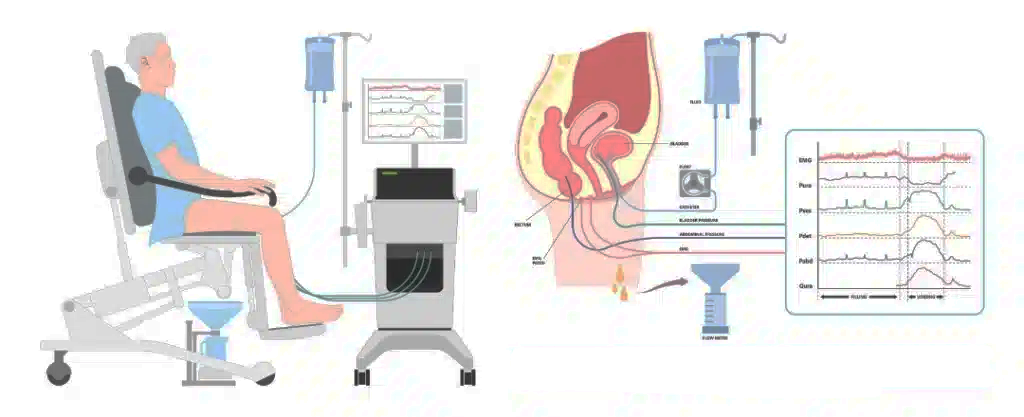Urodynamic study
What is a urodynamic study?
It is a diagnostic study of the specialty of Urology that informs us through its results how the lower urinary tract works. This study is performed in men and women. The main objective of this study is to analyze if there is any functional alteration of the bladder.
The result of the urodynamic study allows to demonstrate what type of condition the patient suffers from and with that information to make decisions related to the most appropriate treatment.
The urodynamic study provides important information for diagnosis and treatment in case of urinary incontinence, voiding difficulty, pelvic pain and/or pelvic organ prolapse, among others.
What is the purpose of the urodynamic study?
Urodynamics consists of taking accurate measurements to evaluate bladder function.
It is a method to determine the impact of a known disease on the urinary tract. It is a study that evaluates the behavior of the bladder in the filling and emptying phase.
During the study, the patient’s symptoms are provoked: urinary incontinence, urinary urgency or difficulty in urinating. In this way, we find out what happens in the lower urinary tract when the patient presents these symptoms.

Who should undergo a urodynamic study?
It is usually performed in patients with voiding problems, in neurological diseases, in spinal cord trauma, in patients with incontinence or urinary retention and in patients with voiding difficulty without apparent organic cause.
What does the study consist of?
- It is performed on an outpatient basis and under local anesthesia to minimize discomfort.
- It does not require fasting.
- A urine culture is required to rule out urinary infection prior to the study.
- The patient must remove underwear and put on a gown to make this study more comfortable.
- With the patient lying on a stretcher, very thin catheters are placed in the bladder through the urethra and another in the rectum which are connected to an external sensor to measure bladder pressures.
- During the time the study lasts (30-60 minutes), the patient will be seated in a special chair and the equipment will record the bladder pressures and their behavior, as well as if there are episodes of urinary urges, pain or urine leakage.
- Once the recording systems have been adjusted, bladder filling begins. The urologist will instruct you to cough or force your abdomen for different measurements.
- When the bladder is full, you will be asked to urinate. It is important not to interrupt this urination.
- In CAU the urodynamic study is performed by a Urologist, who will give you the report of the study at the time.
In which cases is the Urodynamic Study indicated?
In those patients who present some type of incontinence (loss of urine) and in cases of pelvic organ prolapse.
What should I know when undergoing a urodynamic study?
- It is a test that is performed on an outpatient basis and is not painful, in which the patient will be catheterized: bladder catheterization (through the urethra) and anal catheterization (through the anus).
- It is important to attend the test with an urge to urinate because a flowmetry will be performed.
- During the study, the patient will feel the urge to urinate and will not be able to do so until the professional indicates it.
- It is not necessary for the patient to be fasting.
- To avoid infection, it is possible to take antibiotics before and/or after the study.
- The result is immediate
